In the cool wet sand at my feet, an olive Ridley hatchling lies upturned, unmoving. The pale yellow of its underbelly is exposed to the harsh morning sun, to the ghost crabs plucking delicately at the eyes of its many dead conspecifics, to the murder of crows gorging on unhatched eggs nearby.

Just six metres away the sea roars encouragement, beckons with effervescent fingers. The hatchling tilts its head, stirs from its stupor. Its right fore flipper extends towards the sky, its neck arches upwards and backwards, and with a supreme effort it rolls right side up. Then it moves towards the tide. Pulling with fore flippers, pushing with hind. The same determined crawl that has advanced it across the epochs.
FITTER THAN THE DINOS
I am in the Ganjam district of Odisha, at Gokharkuda beach near the Rushikulya river mouth: one of the largest olive Ridley sea turtle nesting sites in the world. About 50 volunteers have been aggregated here this mid-April morning, for the 'Emergency Reponse for Olive Ridley Hatchlings', organised by Wildlife Trust of India and the International Fund for Animal Welfare (IFAW-WTI) in concert with the Odisha Forest Department.
Ideally, we wouldn't be needed.
Sea turtles have, after all, withstood the planet's vicissitudes for well over a hundred million years. (The oldest known sea turtle fossil is that of Desmatochelys padillai, an Early Cretaceous species that lived about 120 million years ago.) Ancestral sea turtles brushed off the CretaceousPaleogene mass extinction that wiped out non-avian dinosaurs along with three-fourths of all plant and animal species some 66 million years ago. And we evolutionary noobs, not even haplorrhines when ol' Chicxulub shivered the Earth, now have to help these ancient creatures survive!
In an ideal world we wouldn't be needed. But six of the seven extant sea turtle species are now threatened with extinction according to the IUCN's Red List. Some are deemed 'Critically Endangered'. Even Lepidochelys olivacea, the olive Ridley, understood to be the most abundant sea turtle species, has been declared 'Vulnerable'.
This story is from the {{IssueName}} edition of {{MagazineName}}.
Start your 7-day Magzter GOLD free trial to access thousands of curated premium stories, and 9,000+ magazines and newspapers.
Already a subscriber ? Sign In
This story is from the {{IssueName}} edition of {{MagazineName}}.
Start your 7-day Magzter GOLD free trial to access thousands of curated premium stories, and 9,000+ magazines and newspapers.
Already a subscriber? Sign In
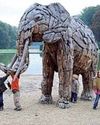
Why Children Are Needed To Help Save The World
On my very first day in India, I encountered many marvelous new customs not practiced in the United States, my home country. But the most curious by far involved trees. Here and there, alongside the roaring streets of Mumbai were rings of marigold wreathed around twisting banyan trunks like dried rays of afternoon sunlight…
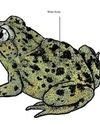
Who's Who?
Fact: all toads are frogs, but not all frogs are toads! Let’s unpack this...
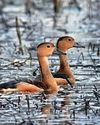
The Sea Raptor
The White-bellied Sea Eagle Haliaeetus leucogaster is one of the most common raptors along the Indian coastline. Nevertheless, the sight of this soaring, broad-winged, white and black bird of prey is nothing less than majestic
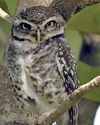
Bringing Up Bob Hoots.
While we were visiting a friend’s farm in the village of Yelachetty, near Bandipur Tiger Reserve, we found Spotted Owlets nesting on the tiled roof… and one of the chicks on the kitchen floor!
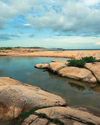
Yala, Land Of The Leopard
Yala is not only Sri Lanka’s second-largest, but also the most-visited national park in the island nation.
The Wizards Of Oz!
Australia is not only a country, but also a continent. The land down under, cut-off from the rest of the world has an abundance of unique species of native animals, birds, reptiles, insects and plants.

Scales & Tails
I was really excited and looking forward to the workshop on reptiles and amphibians at Nature’s Nest in Mollem, Goa, between June 24 and 26, 2017. It was my opportunity to meet renowned herpetologist Varad Giri.
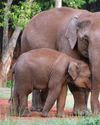
Big, Brilliant And Endangered
When one thinks of elephants, the first word that probably comes to mind is BIG! But elephants, while they may be the largest creatures on land, are not just big and powerful, they’re wise and sensitive as well. Recent scientific studies have established that they are among the most intelligent animals in the world.

Earth Manners
Everyday habits matter! Let’s be kind to the planet, animals and ourselves!
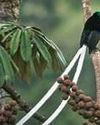
World Scan
CHINA’S IVORY TOWNAn explosive investigation by the Environmental Investigation Agency has revealed how criminal gangs originating from an obscure town in southern China have come to dominate the smuggling of ivory tusks poached from African elephants.